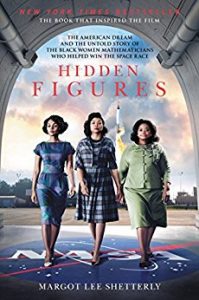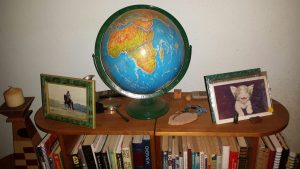
Back to book reviews.
Today’s book is Hidden Figures by Margot Shetterly. It is the story of the many African American women mathematicians who worked at the Langley Research Center in Hampton, Virginia from WWII through the early years of the American manned space program.
If you haven’t seen the movie Hidden Figures, based on the book, go see it. The movie tells the story of three of the women, Dorothy Vaughan, Katherine Johnson and Mary Jackson in the time just before John Glenn’s orbital flight in 1962. In addition to providing a summary of the book, it is an excellent movie.
But the book covers so much more than the movie.
After seeing the movie you may ask “where did these African American women, born between 1910 and 1925, come from?” They were so much a part of the space program. There is no question that they were smart and had a talent for math. However, we know that being smart and being good at math isn’t restricted to a single gender or ethnicity. But these women were working with mathematics at a high level. It was a level requiring knowledge well beyond high school algebra and geometry. How did these women get trained?
Hidden Figures describes the culture of the black colleges whose graduates could not hope for jobs in science and engineering. Those jobs were reserved for whites. So the profession of teacher was honored in the black community and provided a way to identify students with a talent for math and the sciences and educate them. Communities came together to provide financial support when the family did not have the means to send their children to college.
So women like Vaughan, Johnson and Jackson had to opportunity to go to college and be educated in mathematics. They returned to their communities and taught the next generation. Teaching was considered a very good job.
Unlike the movie, which compresses many stories into a short period of time, the book covers almost thirty years. It begins with the early days of World War II when Philip Randolph, the head of the largest black union in the country, was able to convince President Roosevelt to sign the act that removed race as a hiring criteria in the defense industries. Before Langley was a major NASA facility, it was a major aeronautical research center and a key facility in designing and building the airplanes that helped win the war. This was the environment where the “colored computers” like Dorothy Vaughan began using their mathematical training. The book ends with Katherine Johnson’s watching the Apollo 11 moon landing, another space milestone she played a role in.
Hidden Figures tells a fascinating story of community and of individuals willing to push boundaries. It contains stories of frustration and triumph. The humiliations of the Jim Crow years are described. It is a well done history of a time and of people that have been hidden from general knowledge for too long.
In a very real sense Shetterly is the third generation of African Americans that impacted the American space and defense industry. Her father, who was born in 1944 and worked at Langley, was the same generation as the children of the main characters in the movie. That first generation paved the way for their children to follow in their footsteps. Shetterly, part of the next generation, grew up thinking that it was normal for black men and women to be scientists and engineers. By writing the story of the women who began it all, she adds herself to a long list of women who have made Langley Research Center famous.
If you have enjoyed this post please share it with others using the buttons below.
Please let me know of your experiences as a woman in STEM or any other experience you wish to share by leaving a comment.
